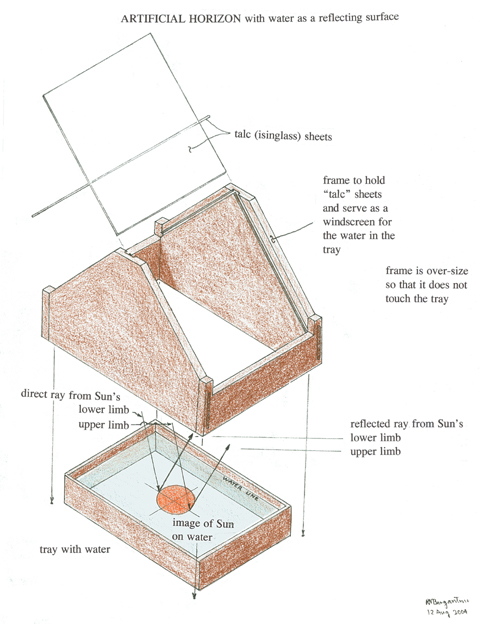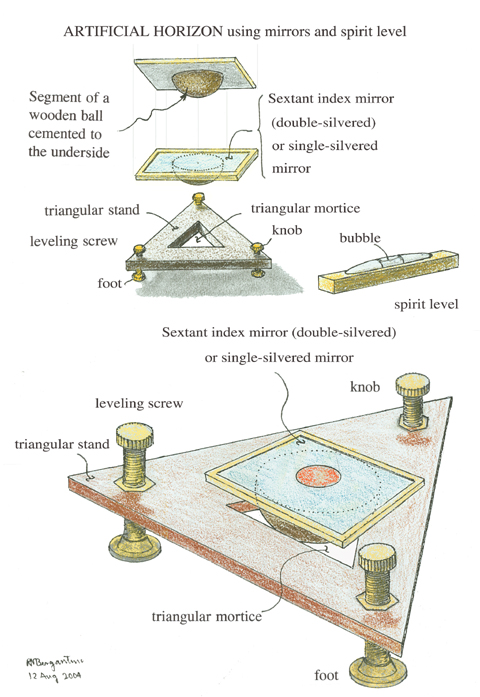Water Horizon
On 22 July 1804, while at White Catfish Camp on the Missouri River, ten miles above the mouth of the Platte, Lewis devoted most of journal entry to a description of each of the instruments he and Clark used in making celestial observations. The first type, illustrated here in a drawing by Robert N. Bergantino, was the simplest.
An Artificial Horizon on the construction recommended and practiced by Mr. Andrw. Ellicott of Lancaster, Pensyla., in which water is used as the reflecting surface; believing this artificial Horizon liable to less error than any other in my possession, I have uniformly used it when the object observed was sufficiently bright to reflect a distinct immage; but as much light is lost by reflection from water I found it inconvenient in most cases to take the altitude of the moon with this horizon, and that of a star impracticable with any degree of accuracy.
Mirror Horizons
In his journal for 22 July 1804, Lewis described the second type of artificial horizon as follows:
An Artificial Horizon constructed in the manner recommended by Mr. Patterson of Philadelphia; glass is here used as the reflecting surface. this horizon consists of a glass plane with a single reflecting surface, cemented to the flat side of the larger segment of a wooden ball; adjusted by means of a sperit-level and a triangular stand with a triangular mortice cut through it’s center sufficiently large to admit of the wooden ball partially; the stand rests on three screws inserted near it’s angles, which serve as feet for it to rest on while they assist also in the adjustment. this horizon I have employed in taking the altitude of the sun when his image he has been reather too dull for a perfect reflection from water; I have used it generally in taking the altitude of the moon, and in some cases of the stars also; it gives the moon’s image very perfectly, and when carefully adjusted I consider it as liable to but little error.—
The third type that Lewis described was similar to the second:
An Artificial Horizon formed of the index specula [mirror] of a Sextant cemented to a flat board; adjusted by means of a sperit level and the triangular stand before discribed. as this glass reflects from both surfaces it gives the images of all objects much more bright than either of the other horizons; I have therefore most generally employed it in observing the altitudes of stars—
Lewis’s remarks about the comparative suitability of the three horizons for observing stars are interesting. He recorded data on just one star altitude—that of Polaris, on 17 July 1804, to determine the latitude of the “Bald Pated Prarie,” in the vicinity of Peru, Nebraska. He never provided any data on the altitudes of the moon or stars taken during observations for lunar distance, as important as those data would have been for determining longitude.


